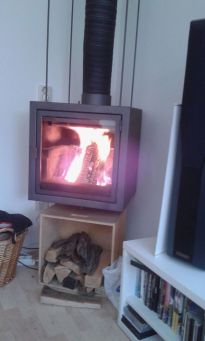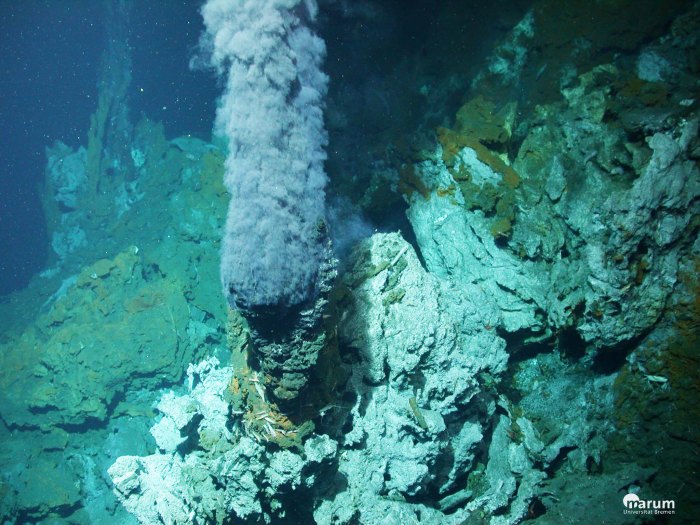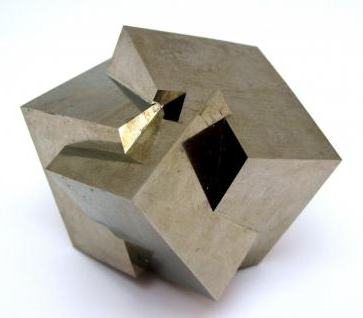One of the most spectacular features of geology (at least to me) are black smokers. They consist of hollow conduits where hot, nearly boiling fluids exit the oceanic crust. These fluids can be white or black since they carry particles from underlying rocks. The smoke may contain valuable metals such as nickel, arsenic, copper, silver and even gold! On top of this, in the conduits or next to the chimneys, the most amazing and strange life forms can be found. All the more reason to explore what is going on there, and where we could expect systems like these to occur!

Let’s compare the system to a fireplace and the chimney above it. Just like at home, these seafloor conduits transport hot material upwards. But how does fluid become heated? Is there a fire below the surface? Fortunately not, but as you may know, most volcanic activity –that is, the biggest volume of magma– occurs at spreading ridges at the seafloor! This is where tectonic plates drift apart and new oceanic crust is created. You can imagine that, when seawater is in contact with this newly formed hot magmatic rock, strange things will happen to the water. Will it start to boil? Will it interact with the rock? And how did it get there in the first place? These processes have remained a mystery until quite recently: the first black smokers were discovered only about 40 years ago, near Galapagos. Now, most of us may have seen them on National Geographic or read about them in geography or geology books. But they are actually really special! How do they work?
All rocks, even solid blocks, can have pores in them. Like for a sponge, these spaces are open to fluid that can fill it up completely. Connected pores will allow flow (very slowly, of course) throughout a larger rock body. And that is exactly what happens at the seafloor. The top part of the crust is quite porous or fractured so water can infiltrate and flow along some distance. This may not seem very exciting; it resembles rainwater percolating into the soil, only much slower. But when it gets close to a magmatically active area, such as an oceanic spreading zone, it starts to heat up. And as you can see when you are boiling water at home, hot water wants to go up (it forms bubbles in the pan) because it is less dense than colder water. The same happens within the crust: water starts to rise to the surface. And as it does, it interacts with its surroundings, taking up some elements and particles from the rock. Upon exiting the crust the fluid can be up to 400°C, and might look smoky due to the particle load.

Where the water exits the crust, particles are dispersed over the bottom and minerals precipitate to form a chimney around the outflowing water. Structures like these can grow up to 60m high from the bottom! If you would walk over the seafloor, they would appear as skyscrapers. And, often, they are not alone but occur in groups near a spreading zone or hydrothermal field. This forms an interesting landscape of big gray hollow pipes, in the middle of the ocean, far away from land. But what do these chimneys look like on the inside?

We already heard that when the hot water passes through rock, it takes up elements, some of them being rare metals. In fact, minerals containing these mainly grow on the inside of the chimney while the outside skeleton is formed really quickly. As soon as the hot fluid mixes with seawater, the gray or white outside structure forms. It shields the inside from cooling by seawater, where sulphide minerals start to grow. One of these is quite well known: the pyrite mineral, also called “fool’s gold”. It contains iron, which is not very rare, but other mineral types can contain copper, silver, lead, nickel or gold. This makes the black smokers a point of interest to mining companies (imagine how challenging a mine at several kilometers depth can be in the middle of the ocean.. nonetheless, this can become reality!). Other parties that are fascinated by these structures are oceanographers and biologists. Where hot fluids exit the crust, many new life forms are discovered (for more information, see this link for biogeology); life here has become adapted to the extreme conditions, which perhaps form a close link with the way life has emerged on Earth. So whether you are fascinated by strange-looking animals or by oddly shaped rock structures, this is the place to look!